This feature is only available for Devolutions Server, Microsoft Azure SQL, Microsoft SQL Server, and SQLite data sources.
Multi-factor authentication (MFA) identifies users by at least two different components: something that the user knows (often a password) and something that the user possesses (e.g., a validation code sent to a mobile device). If one of the components is missing or supplied incorrectly, the user's identity is not established with sufficient certainty and access to the data source will remain blocked.
MFA is set at the data source level, except in Devolutions Server, where it is set on the user. Remote Desktop Manager supports Authenticator (TOTP), Yubikey, and Duo.
Configure multi-factor authentication on a Microsoft Azure SQL or SQL Server data source
- In Remote Desktop Manager, go to the data source for which you want to configure the MFA.
- Go to File – My account settings and click on Data source MFA.
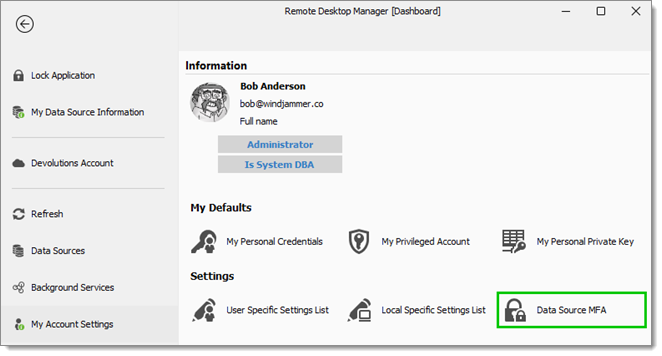
File – My account settings – Data source MFA - In the Multi-factor configuration window, click Change.
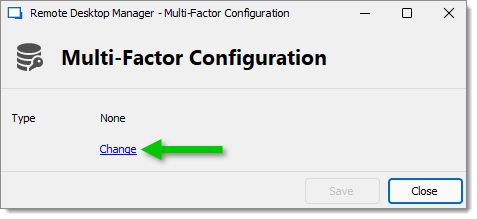
Change the multi-factor configuration - Select your MFA type in the drop-down list.
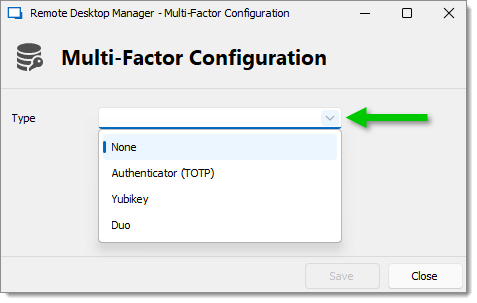
Multi-factor authentication type - Follow one of the links below depending on the choice made in the previous step:
Configure multi-factor authentication on a SQLite data source
- In Remote Desktop Manager, go to the data source for which you want to configure the MFA.
- Go to File – Data sources and click on the Edit data source button.
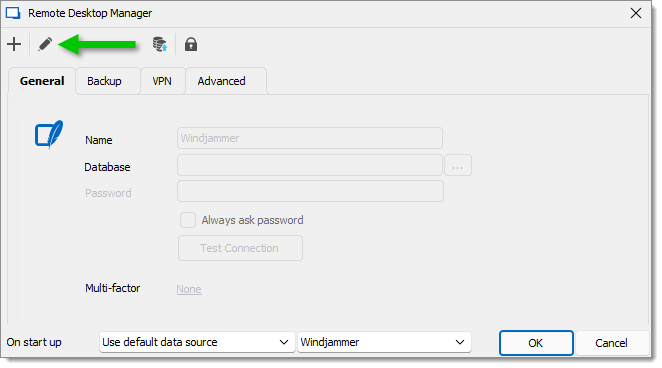
File – Data sources – Edit data source - Next to the Multi-factor option, click None.
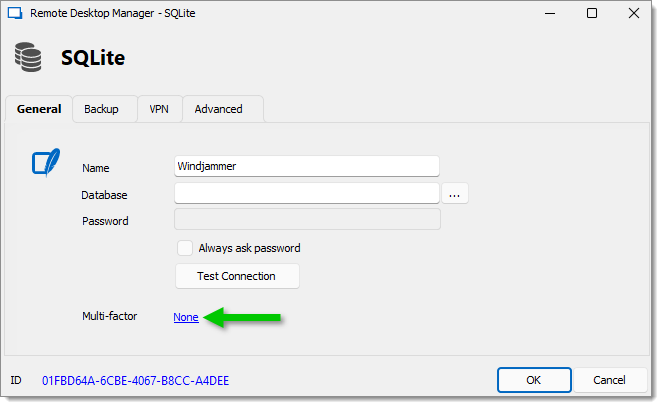
Multi-factor option - In the Multi-factor configuration window, click Change.

Change the multi-factor configuration - Select your MFA type in the drop-down list.

Multi-factor authentication type - Follow one of the links below depending on the choice made in the previous step:
Please refer to Lost the MFA set on the data source if the MFA set on the data source has been lost.
Go to the section that corresponds to you data source type:
Configure multi-factor authentication on a Microsoft Azure SQL or SQL Server data source
- In Remote Desktop Manager, go to the data source for which you want to configure the MFA.
- Go to File – My account settings and click on Data source MFA.

File – My account settings – Data source MFA - In the Multi-factor configuration window, click Change.
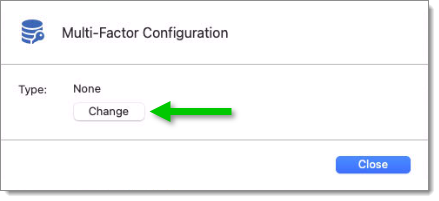
Change the multi-factor configuration - Select your MFA type in the drop-down list.
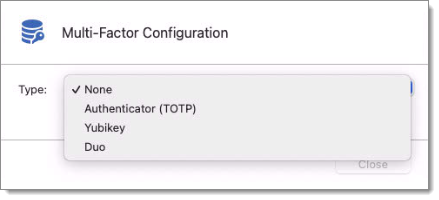
Multi-factor authentication type - Follow one of the links below depending on the choice made in the previous step:
Configure multi-factor authentication on a SQLite data source
- In Remote Desktop Manager, go to the data source for which you want to configure the MFA.
- Go to File – Data sources and click on the Edit data source button.

File – Data sources – Edit data source - Next to the Multi-factor option, click None.
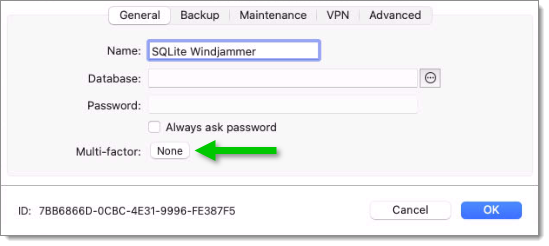
Multi-factor option - In the Multi-factor configuration window, click Change.

Change the multi-factor configuration - Select your MFA type in the drop-down list.

Multi-factor authentication type - Follow one of the links below depending on the choice made in the previous step:
Please refer to Lost the MFA set on the data source if the MFA set on the data source has been lost.







